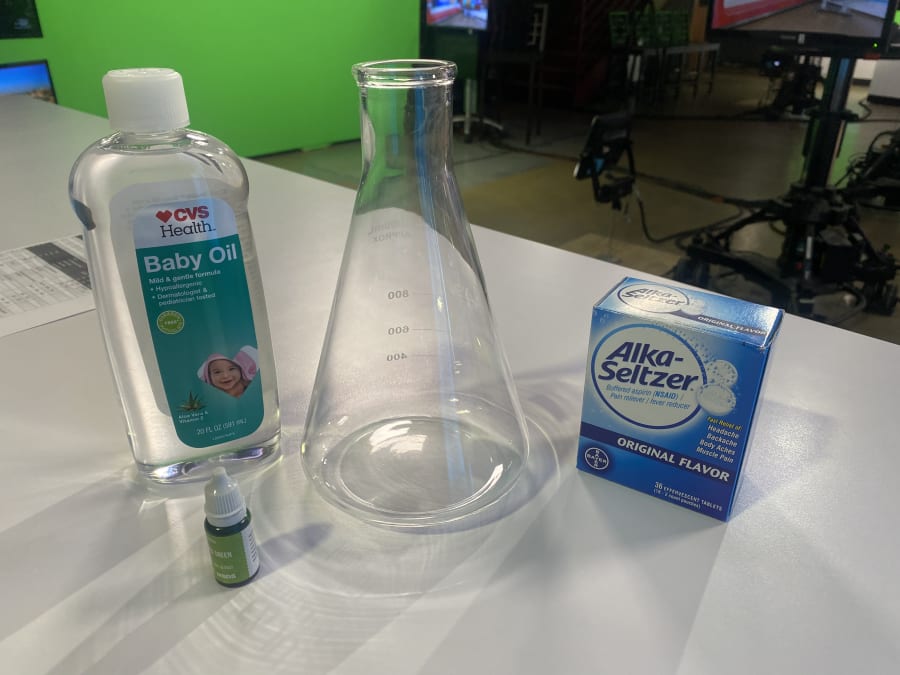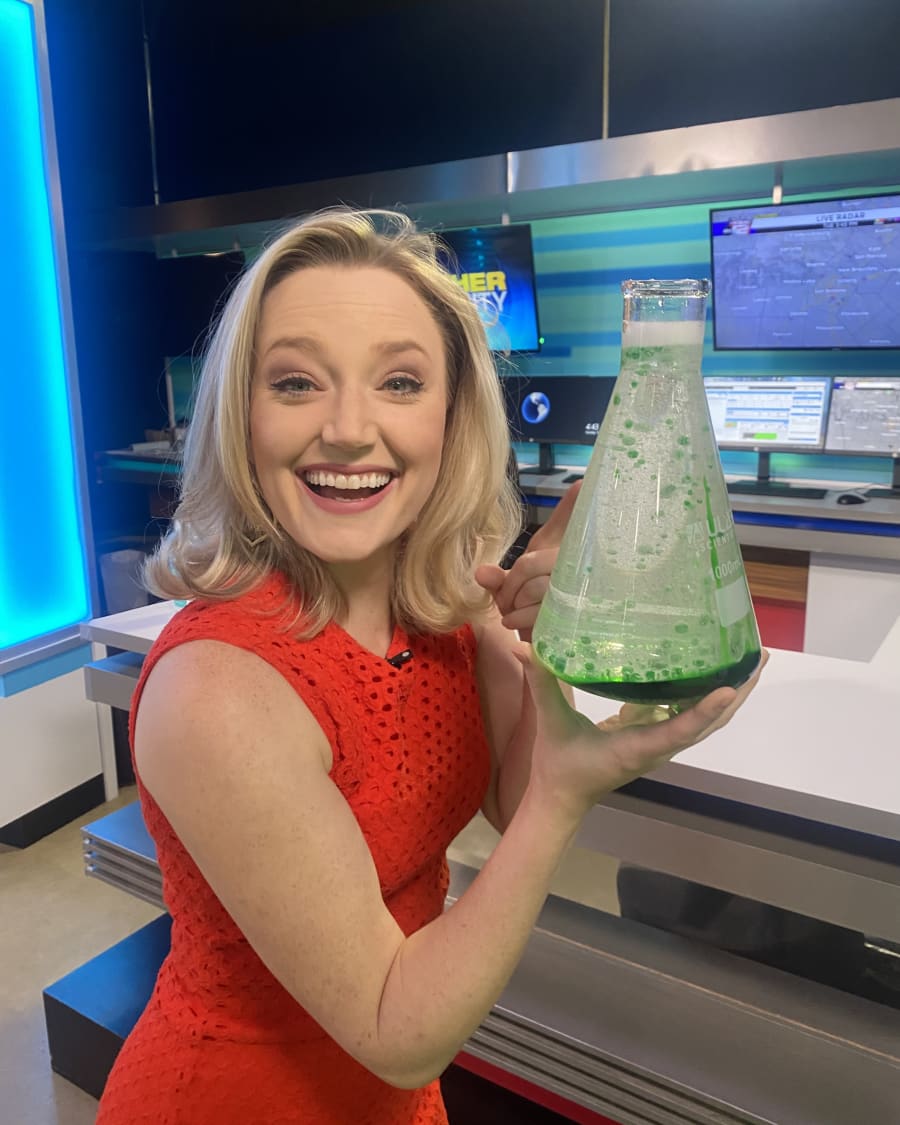👉 Watch the video of Sarah’s school science experiment here!
Hello parents, teachers and students! If you’re looking for a fizzy, fun experiment, look no further! Making these baby oil lava lamps will teach your students about mixtures, solutions, and density.
Be sure to check out GMSA@9 on Wednesdays when Meteorologist Sarah Spivey does the demonstrations and explains the science behind it.

HERE’S WHAT YOU’LL NEED

- Clear plastic or glass bottles (smooth sides preferred). For fun, I used an Erlenmeyer flask to make this experiment look more science-y 😉
- Baby oil
- Water
- Food dye
- Alka-Seltzer tablets
DO THE EXPERIMENT
- STEP 1: Fill the bottle about 3/4 the way with baby oil
- STEP 2: Add some water and watch it sink to the bottom
- STEP 3: Put a few drops of food dye into the bottle. The dye should sink to the bottom and mix with the water
- STEP 4: Add an Alka-Seltzer tablet to the bottle. The gas should cause the colored water to rise and bubble up throughout the baby oil

HOW IT WORKS
This is a good example of solutions, mixtures, and density.
DENSITY: The water and food dye are more dense than water, so they sink to the bottom of the bottle.
MIXTURE: Water and oil do not mix into a solution, so the colored water stays separate from the baby oil. Thus, the baby oil and the colored water form a mixture, rather than a solution.
SOLUTION: The Alka-Seltzer tablet contains sodium bicarbonate and citric acid which produces carbon dioxide gas when mixed with the colored water.
SCIENCE WITH SARAH
If you’d like Sarah and David to come to your school and conduct a science experiment live on KSAT, email sciencewithsarah@ksat.com.
Parents and guardians: upload a video of your child performing the activity by clicking here. Send it in and you might see it on GMSA @ 9 a.m.!



